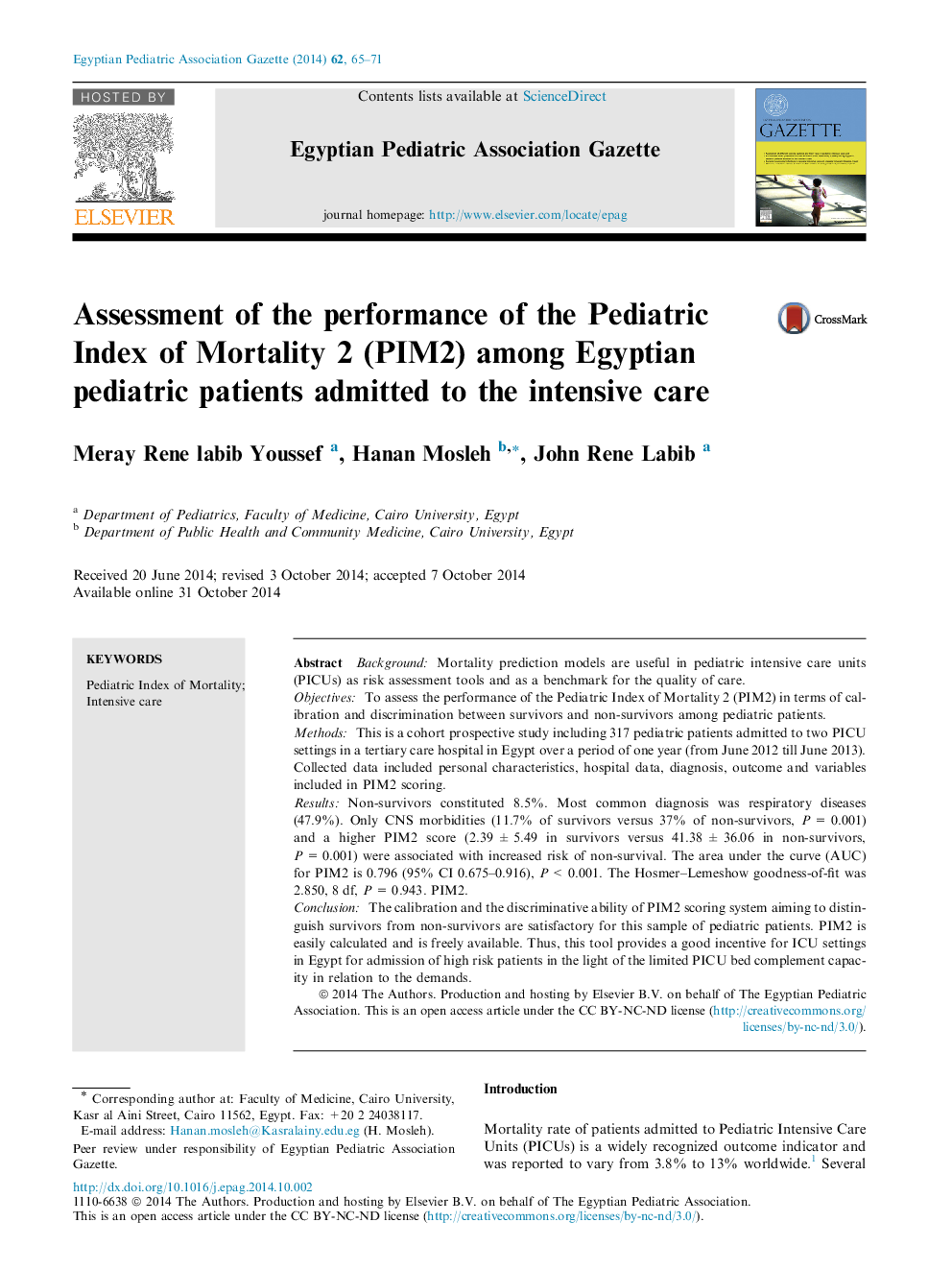| Article ID | Journal | Published Year | Pages | File Type |
|---|---|---|---|---|
| 4153651 | Egyptian Pediatric Association Gazette | 2014 | 7 Pages |
BackgroundMortality prediction models are useful in pediatric intensive care units (PICUs) as risk assessment tools and as a benchmark for the quality of care.ObjectivesTo assess the performance of the Pediatric Index of Mortality 2 (PIM2) in terms of calibration and discrimination between survivors and non-survivors among pediatric patients.MethodsThis is a cohort prospective study including 317 pediatric patients admitted to two PICU settings in a tertiary care hospital in Egypt over a period of one year (from June 2012 till June 2013). Collected data included personal characteristics, hospital data, diagnosis, outcome and variables included in PIM2 scoring.ResultsNon-survivors constituted 8.5%. Most common diagnosis was respiratory diseases (47.9%). Only CNS morbidities (11.7% of survivors versus 37% of non-survivors, P = 0.001) and a higher PIM2 score (2.39 ± 5.49 in survivors versus 41.38 ± 36.06 in non-survivors, P = 0.001) were associated with increased risk of non-survival. The area under the curve (AUC) for PIM2 is 0.796 (95% CI 0.675–0.916), P < 0.001. The Hosmer–Lemeshow goodness-of-fit was 2.850, 8 df, P = 0.943. PIM2.ConclusionThe calibration and the discriminative ability of PIM2 scoring system aiming to distinguish survivors from non-survivors are satisfactory for this sample of pediatric patients. PIM2 is easily calculated and is freely available. Thus, this tool provides a good incentive for ICU settings in Egypt for admission of high risk patients in the light of the limited PICU bed complement capacity in relation to the demands.
